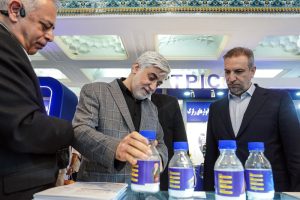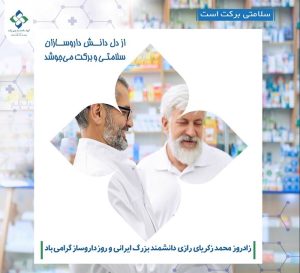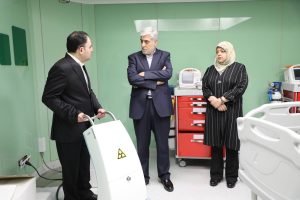
Iran-China in Traditional Medicine: Scientific, Research Co-op
Barekat Health & Pharmaceutical Group: In recent decades, due to the rise of chronic diseases and the need for new, low-side-effect treatments, herbal medicines and traditional medicine have gained attention as primary options in healthcare. Iran and China, both with a long history in traditional medicine and herbal remedies, play crucial roles in this field. Scientific and research collaborations between the two countries can lead to the development of innovative and effective drugs that have global applications.
History of Traditional Medicine in Iran
Traditional medicine in Iran has a history spanning several thousand years and has been recognized as one of the main pillars of disease treatment since ancient times. Written works like Avicenna’s “Canon of Medicine” and Razi’s “Al-Hawi” reflect the depth of Iranian knowledge and experience in the use of medicinal plants. Over time, this knowledge has evolved into a core component of traditional medicine in Iran.
History of Traditional Medicine in China
Traditional medicine in China also has a very long history. Traditional Chinese Medicine (TCM) is based on specific theories like Yin and Yang and the Five Elements, and it includes the use of medicinal plants, acupuncture, massage, and diet. Books such as “Huangdi Neijing” and “Bencao Gangmu” are among the most important sources of traditional Chinese medicine, showcasing the depth of Chinese knowledge and experience in this field. Traditional Chinese medicine encompasses various methods and techniques, including:
– Herbal Therapy: The use of medicinal plants to treat diseases.
– Acupuncture: A treatment method that involves inserting thin needles into specific points on the body.
– Tuina Massage: A therapeutic massage that helps improve the flow of energy in the body.
Applications of Traditional Medicine in Iran and China
– Therapeutic Uses: In traditional medicine, medicinal plants are used in both Iran and China to treat a wide range of diseases. These include cardiovascular diseases, digestive disorders, respiratory diseases, neurological conditions, and skin diseases. Each medicinal plant contains active compounds that can help treat various conditions.
– Preventive Uses: In addition to treatment, medicinal plants in traditional Iranian and Chinese medicine are also used for disease prevention. Regular consumption of medicinal plants can strengthen the immune system, improve overall health, and reduce the risk of chronic diseases.
Joint Research Projects
– Collaborative Projects on Anti-Cancer Drug Research and Development: One of the key areas of cooperation between Iran and China is the research and development of herbal anti-cancer drugs. Plants such as “barberry” and “saffron” in Iran, and “ginseng” and “goji berry” in China, contain active compounds effective in the prevention and treatment of cancers. Joint projects between universities in both countries focus on extracting and identifying these compounds and conducting clinical trials.
– Research Project on Barberry: One successful joint project between Iran and China involves research on the “barberry” plant. This plant, cultivated in various regions of Iran, has potent anti-cancer and antioxidant properties. Collaborative research between Mashhad University of Medical Sciences and Peking University has led to the identification of active compounds in this plant and the development of a herbal drug currently in clinical trial phases.
– Research Project on Ginseng: Ginseng is one of the most important medicinal plants in traditional Chinese medicine. Joint research between Iranian and Chinese universities has led to studies on the anti-inflammatory and immune-boosting properties of this plant. This research has resulted in the development of a herbal drug effective in treating inflammatory diseases and strengthening the immune system.
– Joint Projects on Cardiovascular Disease Treatments: Cardiovascular diseases are among the most common and deadly diseases worldwide. Medicinal plants can play a crucial role in preventing and treating these conditions. Iranian and Chinese collaborations in this field include research on plants like “barberry” and “ginger” to develop drugs that can improve cardiovascular health. These studies involve laboratory and clinical evaluations to assess the effects of herbal medicines on blood pressure, cholesterol, and other risk factors.
– Joint Projects on Anti-Inflammatory and Pain Relief Drugs: The use of herbal medicines to reduce inflammation and pain is another significant area of cooperation between Iran and China. Plants such as “frankincense” and “turmeric” in Iran, and plants like “shishind” and “chagor” in China, contain anti-inflammatory and pain-relieving compounds. Joint projects between research centers in both countries include identifying these compounds, evaluating their effectiveness and safety, and developing new herbal drugs.
Role of Universities & Research Centers
Universities and research centers in Iran and China play a key role in advancing joint research projects. Prestigious institutions such as Tehran University of Medical Sciences and Mashhad University of Medical Sciences in Iran, and Peking University and the University of Traditional Chinese Medicine in China, contribute to the development of research collaborations through joint research programs, student exchanges, and scientific conferences.
The establishment of joint research centers between Iran and China is another important step in the development of herbal medicines. These centers, equipped with advanced facilities and expertise from both countries, focus on the research and development of new herbal drugs. Additionally, these centers play a critical role in testing and evaluating new drugs.
Challenges and Opportunities
International collaborations often face various challenges. In the context of Iran-China cooperation in herbal drug research and development, challenges include financial issues, cultural and managerial differences, and legal and regulatory matters. Moreover, international sanctions against Iran can act as an obstacle to advancing these collaborations.
Despite the challenges, there are many opportunities to expand Iran-China cooperation in herbal medicine. The exchange of knowledge and experience, the use of rich herbal resources from both countries, and the development of new and effective drugs can help improve public health and reduce healthcare costs. Additionally, this collaboration could lead to the growth of the pharmaceutical industries and increase the export of herbal medicines from both countries.
Conclusion
Joint research collaborations between Iran and China in the field of herbal medicine demonstrate the significant potential of both countries in this area. By leveraging the rich experiences and herbal resources, along with the expertise available at universities and research centers, Iran and China can develop new and effective herbal medicines with significant positive impacts on public health. The continuation and expansion of these collaborations will benefit not only the two countries but also the global community.
-
Barekat Health & Pharmaceutical Group at the 10th Iran Pharma Exhibition

-
Ali Safa visits Sobhan Oncology & Sobhan Darou

-
Pirsalehi & Safa visit Saman Daroo 8 Knowledge-based Company

-
Barekat Managing Director Visits Samen Pharmaceutical Company

-
Honoring Pharmacists’ Day

-
Barekat Top Executives Visiting to Barekat Hospital

-
Alborz Darou honored as Top Exporter of Qazvin Province in 2024

-
Footsteps & Gazes of Disease: A Revolution in Early Diagnosis

